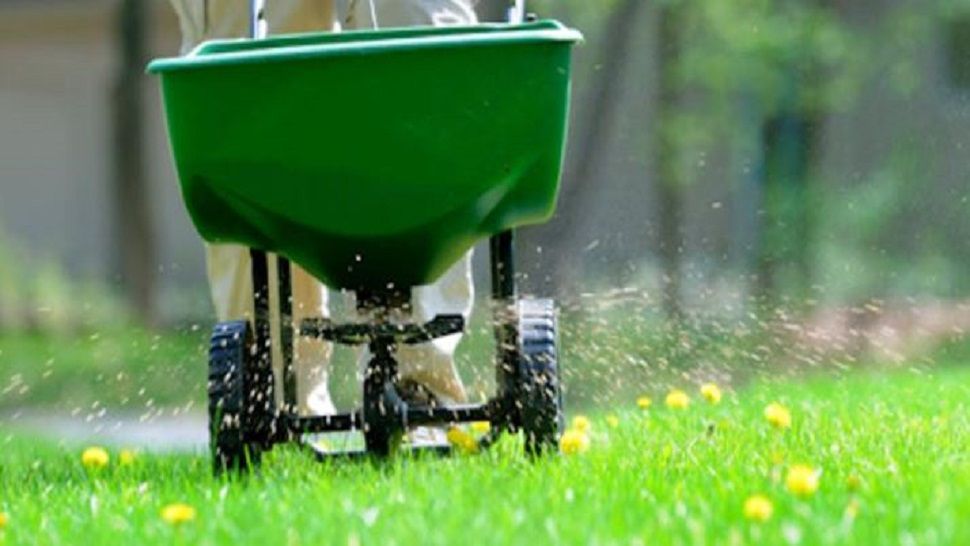With the early arrival of extended periods of warm weather, it’s time to get the lawn in shape for summer.
I’ve already seen several people in my neighborhood out raking and mowing. So it’s something on peoples’ minds.
A good way to start is to rake. It gets remaining leaves from last fall off the grass, twigs and branches that have fallen since then, and helps to get rid of snow mold, which is common if you left your grass longer before it starting snowing regularly.
It’s also good to get some fresh air on the soil and those grass blades.
Good lawn health depends upon a variety of factors such as type of soil, type of grass on the lawn and grass seed used to fill in bare areas, invasive grass or weed types, how much sun or lack thereof, foot traffic, pet waste, fungal diseases, grub or chinch bug infestations, rocks and other debris buried under the soil.
In my experience, the best-looking lawns are well-watered, close to weed-free, and are mowed with grass blades about three inches tall.
In summer 2020, we had many hot days and a serious lack of rainfall for extended periods.
The official rainfall amounts for each month can be deceiving. For example, it can be bone dry for three weeks followed by a significant rainfall event on one day then bone dry again for the next few weeks.
The climate stats may show close to the average rainfall for a month but, in reality, it’s been dry for extended periods, and lawns that haven’t been watered regularly will suffer, particularly if they receive a lot of sun.
So, if you want a good–looking lawn, the first key is keeping it well watered.
If you’d like to get going on a lawn fertilizing program, now is the time to apply a crabgrass pre-emergent.
Crabgrass doesn’t show up immediately. It shows towards the middle and later half of the summer and lasts into the fall. Those single blades of bright green and larger clumps with thick vines.
The thick clumps are wiped out in the winter and may even leave bare areas usually along the edge of the driveway and street. These areas suffer the most due to heat absorption by the pavement and lack of sufficient water.
Putting down a crabgrass preventative can help, but usually, even the best lawns may have a small patch or two of crabgrass in these areas by August.
There are crabgrass killers you can buy and spray on them when that time comes, but the best way to get rid of it is to pull it up by the roots, rake the soil, and put fresh grass seed down in the bare areas.
This is the time of year to apply a crabgrass pre-emergent to get a jump on it.
Keep in mind though, the warmth and dryness we’ve had this spring may affect its effectiveness negatively. It’s still worth applying it to get a jump on crabgrass.
The old school theory on when it’s too late for pre-emergent is when the forsythia stop blooming.

There’s a trick to the application, so you’ll want to hit the edges around the street and driveway heavier than in the middle of your lawn. Not too heavy because crabgrass pre-emergent may contain fertilizer mixed with it. Too much fertilizer will burn your lawn.
Once the pre-emergent is applied, it’s very important to follow the instructions on the bag or the literature left to you by your lawn care company regarding watering it into the soil. This will make it more effective than letting it sit on there for weeks until it dissolves with little or no rainfall to aid in the process.
Note: you cannot put grass seed down where crabgrass pre-emergent is applied for usually around six weeks because the pre-emergent will prevent it from growing.
The same goes for selective herbicides (targets specific types of weeds) such as Weed B Gon and non-selective herbicides such as Roundup (targets all vegetation).
If you have large bare spots, your best bet will be to clean up the soil, put down fresh grass seed and keep the soil and seed moist at all times until it grows. Once the grass grows, you may have to put up with a period where that spot has a mix of healthy young grass and weeds growing together.
You can eventually hit that area with a selective herbicide.
The next treatment in line, four to six weeks after putting down crabgrass pre-emergent, will be a weed and feed to fertilize the healthy grass and take care of broadleaf weeds such as dandelions.





